Sandboxes, Finance Labs and more: Regulators ripe for a financial innovation
- July 14, 2023
- 7 minutes
In this insight:
Innovation-minded regulators see Sandboxes as means, not ends
Collaboration between the National Bank of Ethiopia and UNDP
Nigeria is keeping up with the ‘innovation’ pace
India is blurring the lines between existing sectoral silos
Well-regulated landscape as a facilitator of informed investment decisions
Global Regulatory Innovation Dashboard launched by Cambridge Centre for Alternative Finance
The RegTech, SupTech, FinTech and InsurTech innovations are disrupting the way financial institutions and financial sector regulators are operating by introducing new cross-sectoral tech products and services. However, these developments and innovations often encounter regulatory barriers that can limit their impact and stifle digital growth. This is where regulatory sandboxes and other forms of testing environments for technologies step in.
Observe, ask questions, experiment, test & iterate – discovering new opportunities in any sphere is always a cycle rather than a straight line. The result of one go-round becomes feedback that improves the next round of testing, eventually leading to a refined result that addresses the specific needs or requirements and bridges the possible gaps. Such a testing approach is successfully applied in many Regulatory Sandboxes launched by regulatory sector actors in different jurisdictions around the world.
What is Regulatory Sandbox?
Although there is no consensus on the definition of a ‘Regulatory Sandbox’, commonly it is defined as a time-limited collaborative endeavor involving regulators, service providers and other relevant stakeholders to test innovative products, services, business models and delivery mechanisms against regulatory frameworks safely and securely.
The concept of a regulatory sandbox is relatively new, originating in 2016 by the United Kingdom’s Financial Conduct Authority (FCA). The FCA established the regulatory sandbox to provide a safe space where FinTech start-ups can test their developing and ready-to-go products and services without dealing with the entire burden and expense of regulatory compliance. Since then, sandboxes have been established worldwide, including EU Countries, Australia, Singapore, the United States, and African continent countries including Kenya, Ethiopia, Ghana, and others.
Innovation-minded regulators see Sandboxes as means, not ends
Fostering the tech transformation across the supervisory landscape, central banks are increasingly adopting a best practice of establishing specialized units known as ‘finance labs’, which focus on fostering innovation within the finance industry. These labs are dedicated to exploring and leveraging new financial technologies to enhance the decision-making processes of central banks. Notably, several finance labs have been established in esteemed institutions such as the Bank of England, the Monetary Authority of Singapore (MAS), the Reserve Bank of Australia, the Bank of Thailand, the Central Bank of Bahrain, and the Central Bank of Kenya, among others.
Regulators consider the sandboxes as an advanced toolkit for testing/piloting innovations and gaining insights to ensure knowledge building and improve rule-making, supervision, and enforcement policies so that the entire market can benefit.
Collaboration between the National Bank of Ethiopia and UNDP
A significant development in the field of fostering financial innovation is the collaboration between the National Bank of Ethiopia and the United Nations Development Programme (UNDP), resulting in the launch of an Innovative Finance Lab (IFL). The primary objective of this initiative is to facilitate a transformation in the financial access landscape of Ethiopia helping its regulators to address the financing challenges of micro, small, and medium enterprises (MSMEs) and start-ups by developing innovative and inclusive financial instruments that bridge the financing gap thus playing a strategic and catalytic role in MSME development and growth. Within the purview of the IFL, the Ethiopian Regulatory Sandbox assumes a prominent role. Namely, it aims to create a controlled environment within the National Bank, enabling innovative tech companies to test, innovate and grow a new set of services, products, and inclusive instruments that will unlock new avenues of financing for the rapidly growing MSMEs sector in Ethiopia.
Nigeria is keeping up with the ‘innovation’ pace
This year, Nigeria’s Securities and Exchange Commission (SEC) issued a circular notifying the general public that it is now receiving applications from FinTech operators that are interested in registering for its Regulatory Incubation (RI) Program. The circular was issued further to the earlier Regulatory Incubation Guidelines for Specific Category of FinTech Entrepreneurs (“Guidelines”) released by the SEC in 2021.
SEC’s RI Program operates as a regulatory sandbox, and so FinTechs with innovative products that utilize emerging technologies to deliver services to their customers can now test their products, get the requisite approval from the SEC, and launch in the market.
Other African countries, including Sierra Leone, Kenya, Rwanda, Mauritius, Mozambique, and Ghana, have also embraced the concept of regulatory sandboxes, fostering an environment conducive to collaboration between tech firms and regulatory bodies. These initiatives hold promise for fostering financial development within the African region, while simultaneously facilitating constructive engagement and cooperation between tech innovators and regulatory authorities.
India is blurring the lines between existing sectoral silos
In India, there are four financial sector regulators (banking, securities, insurance, pensions), and each has its own regulatory sandbox framework. This led to a call for an interoperable framework from the industry. Recognizing the benefits of serving innovations through a harmonious regulatory sandbox, the Reserve Bank of India (RBI) launched a Standard Operating Procedure for an Inter-Operable Regulatory Sandbox (IoRS) at the end of 2022. It is designed to bring an interoperable framework by prescribing uniform procedures for inter-sectoral coordination between these multiple RSs.
Open to both Indian and foreign FinTechs, this provides a single point of access for testing, thereby reducing costs, increasing efficiency, and removing ambiguity on cross-sectoral permissibility.
Blurring the lines between traditional financial institutions created product portfolios focused on specific sectors, such as banking, payments, investment, and insurance with innovations such as API and Banking-as-a-Service driven models, FinTechs are moving from the product/sectoral segregation to focus on the consumer needs.
Similarly, other examples of such cross-sectoral innovation can include:
- RegTech and SupTech innovation such as common KYC and sharing across financial regulators,
- applying technology like data analytics, artificial intelligence and machine learning across a range of data sources to enable alternative credit scoring,
- building cross-border financial products, or
- blockchain driven cross-sectoral application and interoperability to enable zero-knowledge proof and deal with privacy concerns.
Well-regulated landscape as a facilitator of informed investment decisions
For regulators and innovators alike, regulatory sandboxes come with some compelling benefits.
Probably the most outstanding one caused by the broadening of the products and services scope through increasing the speed to market of—and trust in—innovations. Regulatory testing empowers innovators to address regulatory shortcomings before a product comes under regulatory scrutiny by making the regulator part of the design process. It also acts as a signaling mechanism to consumers and investors that an idea has the endorsement of regulatory authorities, hence allows to make informed investment decisions.
An insightful statistic brought by The African Tech Startups Funding Report, 2022, shows Investor numbers increase, slowly but surely:

Among other benefits of the regulatory experimentations are:
- The generation of usable empirical data for better regulatory decision-making where regulation is absent or unclear. Equipping the regulators with an evidence-based understanding of the legal implications of a sector’s latest innovations, regulatory sandboxes enable them to draft guidelines and regulations that are tailored to upcoming technologies, protect consumer interest, and mitigate any risk early on.
- The lowered cost of testing for both regulators and innovators. By providing purpose-built structures, mechanisms, and capabilities, regulatory sandboxes significantly lower the cost both of innovation-driven lawmaking (for regulators) and of legal costs linked to product development (for innovators).
Global Regulatory Innovation Dashboard launched by Cambridge Centre for Alternative Finance
To advance the sharing of knowledge and to support financial authorities and the FinTech ecosystem in identifying, benchmarking, and engaging with innovation offices and sandboxes worldwide, the Cambridge Centre for Alternative Finance (CCAF) of the University of Cambridge, Judge Business School, is launching a new digital tool – the Global Regulatory Innovation Dashboard (GRID). It is a free-to-access tool that enables users to locate initiatives by category, location, status, year of inception, and authority type.
Being a public data repository, the GRID aims to provide regulators, supervisors, policymakers, industry professionals, researchers, and the general public with access to valuable information and data concerning regulatory innovation initiatives. It serves as a cooperative platform where users and industry participants can actively engage in reviewing, updating, and sharing data to foster collaboration.
How we can help
Supporting innovative regulatory initiatives, including cooperation with the “global sandbox” – Global Financial Innovation Network (GFIN), around the world with our RegTech & SupTech solutions and services we believe that trust in the data and technologies deployed by the regulatory sector is the key to the success of efforts made towards reaching financial innovation, inclusion, sustainability and economic growth.
BR-AG supports such efforts through both technology tools and expert services. Our cross-disciplinary teams of banking, insurance, capital markets, and tech solution architects & data standardisation specialists work with Regulators to develop the transformation journey tailored to meet their specific objectives and equip with the right technology-based solution. In particular, in our SupTech & RegTech programmes we use the Design Thinking Approach to come up with the most desirable, feasible and viable roadmap and solutions short and long-term, fit for purpose and budget to meet the ultimate regulatory/supervisory goals most efficiently.
Download the brochure to take a closer look at the Design Thinking Approach that we use for SupTech capacity building, sample topics for Workshop Agenda, and our expertise in this field:



